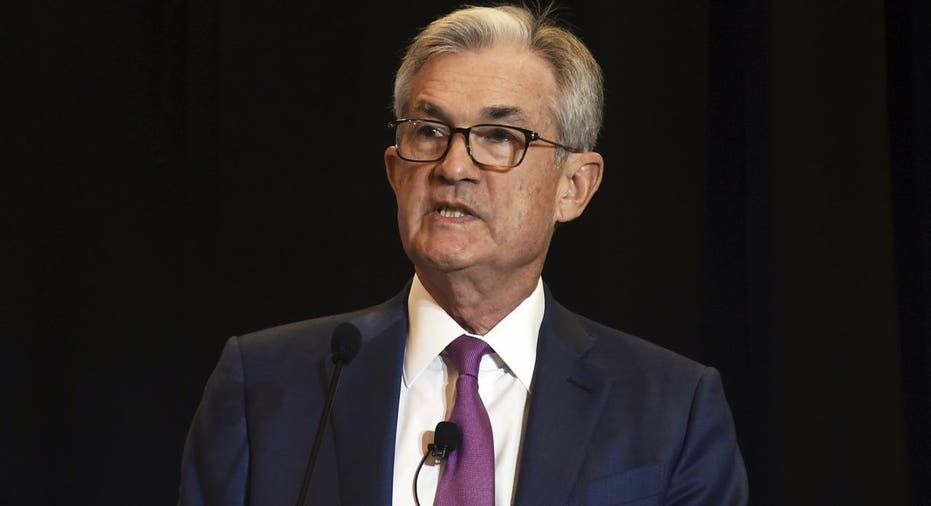The Fed doesn't know how to fight inflation and we're in for a bout of economic malpractice
Our central bankers are setting us up for an unnecessary slowdown or outright recession
Steve Forbes outlines 'basic things' Biden should do to curb inflation
Steve Forbes, chairman and CEO of Forbes Media, argues the Biden administration should 'stop the crazy regulations,' which are 'hurting' U.S. companies and 'making the supply chain crisis even worse.'
The worst inflation in 40 years has belatedly spurred the Federal Reserve to embark on a series of interest rate hikes. The only problem with that plan is that it won’t work.
The blunt truth is that the Fed doesn’t know how to fight inflation. We’re in for a bout of economic malpractice.
No one disputes that inflation is a serious problem right now with prices rising at a pace not seen since the early 1980s. Motorists dread going to the gas pump. Shoppers brace themselves for sticker shocks.
GOVERNMENT SPENDING TO BLAME FOR INFLATION SPIKE, SAN FRANCISCO FED STUDY SAYS
Unfortunately, our central bank and all too many economists have long embraced the idea that manipulating interest rates can keep the economy running smoothly with inflation clocking in at a low rate of 2% or less.
It’s hubris of the highest order to think that a handful of people in Washington can guide an economy where 300 million people a day make billions of buy and sell decisions.
How inflation unfolds depends on Fed: Expert
Miller Value Partners portfolio manager John Spallanzani says he doesn't see a recession 'right now.'
Past performance is hardly reassuring. In the late 1990s, for instance, the Fed raised the cost of money. The result was a recession and a bear market that cut equity values almost in half.
This was followed by the opposite course, cutting rates and seriously reducing the value of the dollar. This led to a red hot commodities boom and the housing bubble. We all know how that turned out.
Chocolatier hit by rising inflation ahead of Easter
'Nailed It!' judge and James Beard award-winning chef Jacques Torres on making customers happy despite rising prices.
What the Federal Reserve does with interest rates is no different than rent controls, only here it is money that is being rented rather than apartments. The only question is how much harm the Fed does with a particular course of action.
There are two types of inflation. One, of course, is the traditional one of devaluing a currency, in this case, the dollar.
WHERE ARE SURGING CONSUMER PRICES HITTING AMERICANS THE HARDEST?
The Fed began creating excessive amounts of money in 2018. The gold price went up 50%. The dollar lost value. Trouble was coming.
Then came the pandemic lockdowns that triggered the other kind of inflation — prices going up because of non-monetary factors such as a drought or the government raising costs through regulations.
In this Sept. 30, 2021, file photo, Federal Reserve Chairman Jerome Powell testifies during a House Financial Services Committee hearing on Capitol Hill in Washington. | Associated Press
Washington and almost all other countries responded to COVID-19 in early 2020 by closing down a large part of their economies, severely disrupting endlessly-intricate supply chains all around the world.
Washington shoveled out trillions of dollars in emergency relief.
Good intentions, but it was clear by the end of 2020 that the spending was overdone.
Nonetheless, the newly-installed Biden administration ginned up even more spending. The tsunami of federal expenditures would have been far worse if Congress hadn’t halted the President’s obese Build Back Better bill.
Still, we had lots of money and disrupted supply. Prices go up.
The way you halt a monetary inflation is to stabilize the value of the dollar. You don’t have to do that by inducing a recession.
How did the Federal Reserve respond? By creating even more money out of thin air. It irresponsibly bought $120 billion of bonds month after month.
Until recently, the Fed has been financing a big portion of Uncle Sam’s record deficits.
How did it pay for this paper? By creating money out of thin air. The Fed might call a dealer like Goldman Sachs and order $1 billion of Treasury bonds and then credit Goldman’s account with money that didn’t exist before.
Here the Federal Reserve has created a potentially catastrophic time bomb. It has been employing a gimmick to keep most of its new money from flooding the economy. With that bond buying, it creates money. But then the Fed has been borrowing that money back from the financial system almost on a daily basis by using a device called reverse repurchase agreements, reverse repos in short.
It’s like pouring water in one end of a pool and then taking it out at the other end.
In February 2020, it owned none these particular instruments. The latest number is a stunning $1.7 trillion.
These kinds of games almost always end badly.
Bringing inflation down takes ‘tricky plane landing’: Former Obama economist
Former Obama Economic Council Chairman Jason Furman argues it will become more challenging for the Fed to bring inflation down ‘by the day.’
What can the Biden administration and the Fed do to curb inflation?
The best thing Washington can do is to get out of the way. The free market will eventually sort out the disruptions brought on by those lockdowns.
Unfortunately, the Biden crowd is playing havoc with this healing process.
Its war on fossil fuels has contributed to rocketing fuel prices. Less than two years ago, the U.S. was a net exporter of oil. No more.
A comprehensive rollback of these White House barriers would be a powerful tonic.
The administration can also pull back on its other regulatory assaults on our economy. In its first year in office it added $201 billion in added regulatory costs and 131 million hours required to handle new government paperwork mandates. Many were put in place through 77 executive orders issued by President Biden, the most since the mid-1970s.
GET FOX BUSINESS ON THE GO BY CLICKING HERE
These policy-triggered costs give businesses little choice but to raise their prices, slowing the mending of the COVID disruptions.
To be sure, events can trigger higher prices, the prime one now being Putin’s barbarous invasion of Ukraine and its impact on the cost of food. Ukraine has been called the breadbasket of Europe. It’s hard to plant seeds when bombs are falling. The U.S. Department of Agriculture projects that Russian and Ukrainian wheat exports will fall by at least 7 million metric tons this year.
Ukraine could win this war fairly quickly if the Biden enabled the country to get all the weapons it needs.
The Fed’s role?
The way you halt a monetary inflation is to stabilize the value of the dollar. You don’t have to do that by inducing a recession. The central bank should cease interest rate price controls. Artificially jacking up the cost of renting money will hurt. Tens of millions of mortgages have floating rates. Homeowners are in for a shock as these rates are reset.
CLICK HERE TO READ MORE ON FOX BUSINESS
Our central bankers are setting us up for an unnecessary slowdown or outright recession.
Instead, the Fed should reduce its holdings of bonds and wind down those reverse repos.
Someday, we’ll go to the best, time-tested solution — a gold standard. Under the last one we had in the 1950s and 1960s, American economic growth rates were 50% higher than what we’ve experienced since.
Steve Forbes is Chairman and Editor-in-Chief of Forbes Media. Steve is also the Co-Author of the upcoming book "Inflation" to be published by Endeavor Books on 4/19/22.



























